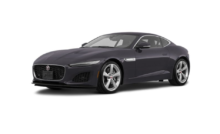2022 Jaguar F-TYPE Collision Avoidance Owners Manual




2022 Jaguar F-TYPE Collision Avoidance


COLLISION AVOIDANCE SAFETY
Make sure the following warnings have been read and fully understood before driving the vehicle. Failure to use the collision avoidance systems safely could result in an accident, leading to serious injury or death.
Collision avoidance systems are not a substitute for driving safely, with due care and attention. Staying alert, driving safely, and being in control of the vehicle at all times is the responsibility of the driver.
Blind spot driving aids are a supplement to, not a replacement for, a safe driving style.
Always use the door and rear-view mirrors. Drive safely at all times, and use the door and rear-view mirrors to help avoid accidents.
Blind spot driving aids may not function at all speeds, or in all weather conditions.
Blind spot driving aids do not correct errors of judgment when driving.
The radar sensors used by the blind spot driving aids may become impaired by mud, rain, frost, ice, snow, road spray, etc. The blind spot driving aid’s ability to detect a vehicle in the driver’s blind spot may subsequently be affected and may give false indications.
Do not attach stickers or objects to the bumpers or to the windshield. Operation of the blind spot radar sensors may subsequently become impaired. The blind spot driving aids’ ability to detect a vehicle in the driver’s blind spot may subsequently be affected and may give false indications.
Do not attach stickers or other objects to the door mirrors, as the blind spot icons and indicators may become obscured. Obscuring the icons and indicators could cause system miscalculations and increase the risk of a collision during a vehicle maneuver.
The blind spot monitor system may not be able to give adequate warning of vehicles approaching very quickly from behind.
The blind spot monitor system may not be able to detect all vehicles and may also detect objects such as roadside barriers, etc.
The rear traffic monitor system may not be able to detect all obstacles. The driver remains responsible for detecting obstacles and estimating the vehicle’s distance from the objects when maneuvering the vehicle. Driver distraction can lead to accidents.
The rear camera and bumper must be kept clean and free from debris or obstructions, e.g., ice, frost, snow, leaves, mud, or insects. Failure to keep the rear camera and bumper clear may result in the rear traffic monitor system miscalculating or giving false indications. Miscalculations and false indications may lead to an accident.
AUTONOMOUS EMERGENCY BRAKING (AEB) SAFETY
Make sure the following warnings have been read and fully understood before driving the vehicle. Failure to understand the Autonomous Emergency Braking (AEB) system could result in an accident, leading to serious injury or death.
The AEB system is a driving aid only. The driver is responsible for driving with due care and attention, and in a safe manner for the vehicle, the occupants, and other road users. The driver should observe all road signs, road markings, and any potential emergency braking situations, and act appropriately.
The AEB system uses forward-facing cameras to detect real vehicles and pedestrians, plus other certified target objects. AEB is not designed to detect any other objects, including non-industry-approved targets.
In order for AEB to operate, it must be able to detect a clear image of the object and be able to determine its movement. If neither of these occurs, the AEB system may not operate.
Seat belts should be worn by all vehicle occupants, for every trip, no matter how short. Failure to do so greatly increases the risk of death or serious injury in the event of an accident.
Make sure that the windshield is kept clean and that the camera’s line of sight is not obstructed by labels, stickers, etc. Failure to do so can cause incorrect AEB operation.
Efficiency is dependent on the condition of the current driving surface and the vehicle’s speed, tires, and braking system.
When a vehicle is parked outside, in full sunlight and in high ambient temperatures, the forward-facing camera may reach an internal temperature of 210°F (99°C). In this state, the instrument panel displays the warning message AEB not available. When the forward-facing camera cools to less than 190°F (88°C), normal operation is resumed, and the warning message extinguishes.
When driving off-road, it is recommended to switch off the AEB system.
When the vehicle’s ignition is first switched on, AEB may require an initialization period before it is fully functional. Efficiency is limited during this period.
AUTONOMOUS EMERGENCY BRAKING (AEB)
Make sure the relevant safety warnings have been read and understood before driving the vehicle. See AUTONOMOUS EMERGENCY BRAKING (AEB) SAFETY.
Not all vehicles are fitted with Autonomous Emergency Braking (AEB). Consult a retailer/authorized repairer for confirmation.
AEB uses forward-facing cameras, located above the rear-view mirror, to help identify an imminent risk of collision with:
- Another vehicle traveling in front.
- A crossing pedestrian.
- In most instances, AEB helps reduce the severity of an impact. In some cases, AEB helps to stop the vehicle before an impact takes place.
- AEB automatically switches on, every time the vehicle’s ignition is switched on.
- If required, AEB can be switched off via the Driver assistance instrument panel menu. See INSTRUMENT PANEL MENU OPERATION.
- AEB operates at speeds above 3 mph (5 km/h). The vehicle detection AEB system is able to operate at speeds of up to 50 mph (80 km/h). The pedestrian detection AEB system is able to operate at speeds of up to 37 mph (60 km/h).
- If an imminent risk of a collision is detected, the system automatically applies the brakes. The instrument panel also displays the message AEB active while AEB is operating.
If AEB brings the vehicle to a stop, the brakes continue to hold the vehicle stationary for a few seconds. After this period, the driver must resume full control of the vehicle. Failure to take back full control of the vehicle could result in an accident, leading to serious injury or death.
- The brake lights are automatically operated in heavy braking situations.
- The driver can override the AEB operation by turning the steering wheel or pressing the accelerator pedal. When overridden, AEB cancels its request for braking to make sure that the driver remains in full control of the vehicle.
- After AEB has been activated, a warning sounds and the instrument panel displays the message AEB was activated.
AUTONOMOUS EMERGENCY BRAKING (AEB) LIMITATIONS
Vehicle detection Autonomous Emergency Braking (AEB) does not operate if:
- The vehicle is negotiating a tight corner.
- The forward-facing cameras are dirty or obscured.
- The vehicle’s speed is below 3 mph (5 km/h), or above 50 mph (80 km/h).
- Visibility is impaired due to severe weather conditions, e.g., heavy rain, fog, or snow.
In addition to the items listed for the vehicle detection AEB system, the pedestrian detection AEB system does not operate if:
- The vehicle’s speed is above 37 mph (60 km/h).
- The detected object is not identified as a pedestrian.
- The height of the object is less than 39 in (1 m).
- The pedestrian detection AEB system cannot determine that the target object is a pedestrian. For example, if the pedestrian is carrying a large object.
BLIND SPOT MONITOR
Make sure the relevant safety warnings have been read and understood before driving the vehicle. See COLLISION AVOIDANCE SAFETY.
The blind spot monitor system monitors an area adjacent to, and approximately 28 ft (8.5 m) behind, the vehicle. When the system detects an overtaking vehicle, the amber warning icon (1):
- Flashes if the relevant turn signal is being used.
- Illuminates continuously if the relevant turn signal is not being used.
- Extinguishes when the system no longer detects a vehicle in the monitored area.
During initialization, the warning icons flash in both door mirrors.
A warning indicator (2) illuminates in the door mirrors when the blind spot monitor system is disabled, not active, or there is a system fault.
The blind spot monitor system can be switched on and off via the Driver assistance instrument panel menu. See INSTRUMENT PANEL MENU OPERATION.
BLIND SPOT MONITOR LIMITATIONS
The blind spot monitor does not operate when:
- Reverse or Park (P) is selected.
- The vehicle’s speed is below 6 mph (10 km/h).
- The radar sensors become blocked.
The blind spot monitor:
- Works most effectively on multi-lane highways.
- Monitors an area of approximately 11 ft (3.3 m) from the side of the vehicle and approximately 28 ft (8.5 m) behind the vehicle.
- May register false targets if traveling along a narrow lane.
- Does not work accurately if the radar sensors are misaligned due to bumper modifications, impact damage, etc.
The instrument panel displays messages to inform the driver of any performance or system issues.
BLIND SPOT MONITOR RADIO FREQUENCY SPECTRUM REGULATION STATEMENTS
This device complies with part 15 of the FCC Rules. Operation is subject to the following two conditions:
- This device may not cause harmful interference, and
- this device must accept any interference received, including interference that may cause undesired operation.
The manufacturer is not responsible for any radio or TV interference caused by unauthorized modifications to this equipment. Such modifications could void the user’s authority to operate the equipment.
This device complies with Industry Canada Standard IC – RSS-210 and IC-RSS-251.
Operation is subject to the following two conditions:
- this device may not cause interference, and
- this device must accept any interference, including interference that may cause undesired operation of the device.
- Frequency of operation: 24.05GHz – 24.25GHz.
- Field strength: Not greater than 2.5V/m peak (0.25V/m average) at a distance of 3 meters.
CLOSING VEHICLE SENSING
Make sure the relevant safety warnings have been read and understood before driving the vehicle. See COLLISION AVOIDANCE SAFETY.
The closing vehicle sensing system monitors an area adjacent to, and up to approximately 230 ft (70 m) behind, the vehicle. Closing vehicle sensing is automatically switched on when the blind spot monitor system is switched on. See BLIND SPOT MONITOR.
An amber warning icon (1) is located in each door mirror. The icon:
- Illuminates continuously if the detected vehicle enters the area monitored by the blind spot monitor system, and the relevant turn signal is not being used. See BLIND SPOT MONITOR.
- Flashes if the detected vehicle enters the area monitored by the blind spot monitor system, and the relevant turn signal is being used. See BLIND SPOT MONITOR.
A warning indicator (2) illuminates in the door mirrors when the closing vehicle sensing system is disabled, not active, or there is a system fault.
CLOSING VEHICLE SENSING LIMITATIONS
The closing vehicle sensing system does not operate when:
- Reverse or Park (P) is selected.
- The vehicle’s speed is below 6 mph (10 km/h).
- The radar sensors become blocked.
- The blind spot monitor system is not operating.
- The vehicle is traveling around a tight bend.
The closing vehicle sensing system:
- Works most effectively on multi-lane highways.
- Monitors an area of approximately 11 ft (3.3 m) from the side of the vehicle, and approximately 230 ft (70 m) behind the vehicle.
- May register false targets if traveling along a narrow lane.
- Does not work accurately if the radar sensors are misaligned due to bumper modifications, impact damage, etc.
The instrument panel and touchscreen display messages to inform the driver of any performance or system issues.
BLIND SPOT ASSIST
Make sure the relevant safety warnings have been read and understood before driving the vehicle. See COLLISION AVOIDANCE SAFETY.
Blind spot assist applies corrective steering inputs if it detects a vehicle in the blind spot monitor area and a lane change maneuver is attempted.
An amber warning icon is located in each door mirror.
When the system detects an overtaking vehicle, the icon:
- Flashes if the relevant turn signal is being used.
- Illuminates continuously if the relevant turn signal is not being used.
If required, the steering input provided by the blind spot assist system can be overridden in order to complete a lane change maneuver.
The blind spot assist system can be selected via the Driver assistance instrument panel menu. See INSTRUMENT PANEL MENU OPERATION.
When selected, the blind spot assist system must then be activated. Press the Advanced Driving Assist System (ADAS) button located in the lower switch panel on the driver’s side of the dashboard to activate the system. See DRIVER CONTROLS.
The ADAS button controls the operation of the lane departure warning, blind spot assist, and Lane Keep Assist (LKA) systems. See LANE DEPARTURE WARNING and LANE KEEP ASSIST (LKA).
When the blind spot assist system is activated, a lamp illuminates the instrument panel to confirm the operation. The instrument panel lamp changes color as follows:
- Gray lines indicate that the lane boundaries are not being tracked.
- Green lines indicate that the lane boundaries are being tracked.
- A red line indicates that the blind spot assist system is intervening in the steering from that side.
Blind spot assist uses the same instrument panel icon as the lane departure warning system. See LANE DEPARTURE WARNING.
A visual representation of the blind spot assist system operation can also be viewed via the Driver assistance instrument panel view. See INSTRUMENT PANEL MENU OPERATION.
The lane boundaries change color. White is used for lane boundaries being tracked, and red indicates that the blind spot assist system is intervening in the steering from that side.
If the blind spot monitor system is switched off, the blind spot assist system also switches off.
BLIND SPOT ASSIST LIMITATIONS
The blind spot assist system does not operate when:
- The rear camera becomes blocked.
- Reverse or Park (P) is selected.
- The vehicle’s speed is below 37 mph (60 km/h) or above 112 mph (180 km/h).
- The radar sensors become blocked.
- The blind spot monitor system is not operating.
The blind spot assist system:
- Works in conjunction with the blind spot monitor and closing vehicle sensing systems.
- Works most effectively on multi-lane highways.
- May register false targets if traveling along a narrow lane.
- Does not work accurately if the radar sensors are misaligned due to bumper modifications, impact damage, etc.
- Does not work accurately if the rear camera becomes obscured.
- Does not work accurately if the rear camera becomes affected by adverse weather conditions, e.g., dense fog, heavy rain, or snow.
REAR TRAFFIC MONITOR
Make sure the relevant safety warnings have been read and understood before driving the vehicle. See COLLISION AVOIDANCE SAFETY.
The driver is responsible for detecting obstacles, and estimating the vehicle’s distance from them when maneuvering the vehicle. Failure to drive with due care and attention could cause an accident, leading to serious injury or death.
The rear camera and bumper must be kept clean and free from debris or obstructions, e.g., ice, frost, snow, leaves, mud, or insects. Failure to keep the rear camera and bumper clear may result in miscalculations or false indications. Miscalculations and false indications could cause an accident, leading to serious injury or death.
The quality of the camera views may vary in different lighting conditions.
- Vehicle warning icon.
- Parking aid plan view.
- Camera icon.
- Feature disabled icon.
The rear traffic monitor feature assists the driver when carrying out a reversing maneuver.
The rear traffic monitor feature automatically activates when all the following conditions exist:
- The touchscreen is displaying either the CAMERAS or PARKING AIDS screen.
- Reverse gear is selected.
- The vehicle is traveling at speeds of less than 10 mph (16 km/h).
To switch from the CAMERAS view to the PARKING AIDS view, touch the parking aid plan view icon (2). To switch from the PARKING AIDS view to the CAMERAS view, touch the camera icon (3).
The rear traffic monitor feature detects cross-traffic vehicles traveling at speeds of up to 34 mph (55 km/h). If activated, the touchscreen displays a warning icon (1) on the relevant side(s) of the screen. The warning icon informs the driver that the vehicle is about to reverse into the path of a moving vehicle. An audible warning also sounds.
The touchscreen or instrument panel may also display warning messages.
If required, the rear traffic monitor feature can be disabled via the Driver assistance instrument panel menu. See INSTRUMENT PANEL MENU OPERATION.
The touchscreen displays the feature disabled icon (4) if the feature is not available or if a fault is detected. The instrument panel may also display messages.
If a fault in a single sensor is detected, the entire rear traffic monitor feature is disabled.
If a fault is not rectified when the engine is switched off and then on again, consult a retailer/authorized repairer.
Recent Posts
VW Jetta Engine Fuse Box Diagram
Access the comprehensive 2010-2018 VW Jetta Passenger Fuse Box Diagram to troubleshoot electrical issues effectively.…
VW Jetta Passenger Fuse Box Diagram
Explore the comprehensive VW Jetta Passenger Fuse Box Diagram to troubleshoot electrical issues effectively. Understand…
2023 Ford F-150 Lightning Fuse Box Diagram
Under Hood Fuse Box Location Remove the front luggage compartment cover. Under Hood Fuse Box…
2022 Kawasaki NINJA H2 SX SE Brake Lever Adjuster Owner’s Manual
2022 Kawasaki NINJA H2 SX SE Brake Lever Adjuster Owner's Manual NOTICE Only adjust the front…
2023 Land Rover Range Rover Evoque Exiting The Vehicle Owners Manual
2023 Land Rover Range Rover Evoque Exiting The Vehicle SINGLE LOCKING WARNING Before exiting the…
2023 Land Rover Range Rover Evoque Front Seats Owners Manual
2023 Land Rover Range Rover Evoque Front Seats FRONT SEAT SAFETY Make sure to read…
